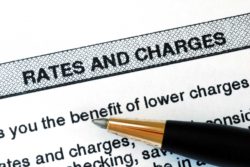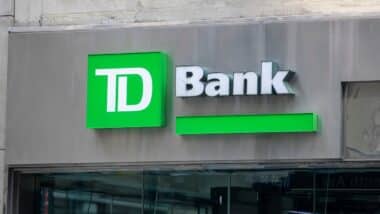 After a decade of regulation, the Consumer Financial Protection Bureau (CFPB) is considering easing rules that held overdraft fees in check. Recently, the CFPB announced that it is reviewing current rules governing how banks and credit unions assess fees when depositors overdraw their accounts.
After a decade of regulation, the Consumer Financial Protection Bureau (CFPB) is considering easing rules that held overdraft fees in check. Recently, the CFPB announced that it is reviewing current rules governing how banks and credit unions assess fees when depositors overdraw their accounts.
If these regulations are rolled back and financial institutions are allowed to return to their former ways of doing business, consumers could wind up paying billions – and low to moderate income people would be hit the hardest.
Overdraft Fees – a Brief History
While banking institutions date back to the Babylonian Empire, the practice of overdrafting is a relatively recent one. It was first devised in 1728 by the newly-established Royal Bank of Scotland for the benefit of a local merchant by the name of William Hogg, who was experiencing cash flow problems.
Hogg was able to make an arrangement with the bank in which they agreed to essentially advance him the funds he required to pay his own expenses while waiting for his own payments to come in.
By the time of the American Revolution, the practice of overdrafting had spread across the British Empire. As the agrarian economy gave way to the new industrial one, start-up businesses required readily accessible credit in order to finance their initial operations without having to resort to taking out loans on non-existent collateral.
Initially, overdrafts were designed to be a tool for businesses as a short-term solution for cash shortages – they were never intended for private individuals. Nonetheless, over the decades, banks made it increasingly easy for consumers to overdraw their accounts as a ready – and ruinously expensive – source of credit.
By the late 20th century, overdraft fees had become a lucrative source of revenue for financial institutions. It became apparent that some sort of government regulatory oversight was necessary.
ATM Overdrafts
Prior to the development of electronic transactions, most people used paper checks. When a check a customer wrote would come in and the account didn’t have enough funds to cover it, the “bounced check” would incur a penalty fee from the merchant to which it was written – and the bank would charge a fee as well.
Starting with the advent of ATM machines in the 1980s, people could more easily keep track of their account balance and were less likely to overdraw their accounts, thus depriving financial institutions a significant amount of revenue. In response, these banks and credit unions began charging higher fees over overdrafts.
It was not uncommon to sign customers up for “overdraft protection” automatically, without their knowledge or consent. With such programs, the bank or credit union would advance a customer the funds necessary to cover a transaction when there were insufficient funds in the account – for a very hefty fee.
As if this were not enough, many of these banks and credit unions would process transactions out of order, starting with the highest amounts – and thus be able to charge multiple overdraft fees. According to some recent class action lawsuits, many of these institutions still engage in this practice.
Here is an example of how it works: A college student has $100 in his account. He spends $10 on breakfast, purchases school supplies for $20, then pays a utility bill online for $35. Then, he realizes he needs a $75 book for a class that afternoon.
Realizing that the purchase will overdraw his account by $35, he goes ahead and makes the purchase, expecting that he might be charged a $35 fee on top of the that – and anyway, he has a paycheck he can deposit tomorrow in order to cover it.
Except that is not what banks have been doing. Instead, they process the $75 transaction first, followed by the $35 utility bill, then his purchases for $20 and $10 respectively. As a result, our student is charged not one, but three overdraft fees.
Why They Do It
A spokesperson for the American Bankers Association says, “Paying the largest transactions first is important because it ensures that important payments like mortgage, rent or credit card bills will be paid.”
Of course, it is also a nice little cash cow for these institutions: according to the FDIC, the large banks made $11.5 billion in overdraft and NSF fees in 2017 alone – and that amount has been going up every year. That figure does not include fees that were assessed by smaller, local community banks and credit unions, which are not required to include such information in their FDIC filings.
A CFPB study from 2017 found that nearly 80 percent of overdraft fees are paid by 9 percent of account holders. These people are among the most “financially vulnerable,” and tend to maintain lower balances and have low credit ratings. Earlier research from 2014 revealed that depositors who opt in to overdraft protection end up paying seven times as much in overdraft fees as those who choose not to participate.
Some of these banks, such as Bank of America, JP Morgan Chase and Wells Fargo say that they have these policies posted on their websites and in their depositors agreements. However, consumers say this information is often buried in the fine print and not clearly laid out.
Is Reordering Transactions Legal?
It would be more accurate to say that the practice of reordering transactions in order to collect more in overdraft fees is not illegal; there are currently no specific rules or regulations prohibiting it. However, plaintiffs in recent lawsuits say that it is deceptive and misleading.
At one time, banks and credit unions simply signed depositors up for overdraft protection automatically. That changed in 2009. In the wake of the financial crisis of 2008-09, the Federal Reserve issued new rules under the Credit Card Accountability, Responsibility and Disclosure Act .
The law itself, signed into law by President Barack Obama, was designed to prevent credit card issuers from engaging in predatory and unfair practices that harm consumers.
The specific provision of the CARD Act that applies to banks and credit unions requires banks to obtain a depositor’s express consent before signing them up for an overdraft protection program. It also bans deceptive practices, which have become the primary claim of plaintiffs in recent overdraft fees litigation.
Are Consumer Protections Being Reconsidered?
In the latter part of June 2019, the CFPB announced that it was conducting a review of the CARD Act in accordance with the Regulatory Flexibility Act, which requires such reviews every 10 years. The review will include an examination of the rule governing overdrafts. The Bureau has stated that the purpose of the review is to reduce any “significant economic impact” on small businesses that may result from current rules.
Once that issue has been examined, it will then be determined if current regulation should be amended, rescinded or allowed to continue without further changes. Their conclusions will be based on whether or not the rule is still necessary as well as public comments that have been submitted and the impact of new technologies.
The CPFB’s findings and actions are being carefully observed by consumer advocates. The believe that the overdraft provision of the CARD act has been instrumental in reducing the number of fees that depositors have been charged.
Nick Bourke, who heads up consumer finance at the Pew Charitable Trusts, says that in light of his organization’s research, rules governing overdraft fees are still necessary. Speaking to the New York Times, Bourke said, “It would definitely be a bad thing to roll back what minimal protection is in place already.”
In April of 2019, CEOs of the nation’s seven largest banks were called to account for their practices by the House Financial Services Committee. Among several issues that were raised was how these institutions handle overdraft fees.
While the banks argue that account holders can simply opt out of overdraft protection (in which case transactions will simply be declined in the case of an insufficient balance), serious questions were raised about the practice of reordering transactions. Asked whether or not they would support – or at least not oppose – legislation that would prohibit transaction reordering, most of the banking executives in attendance replied that they would “look into it.”
What to Do if You Have Been Hit With Excessive Overdraft Fees
If excessive overdraft fees have been a problem for you, your best course of action is to opt out of overdraft protection. You may wind up with the embarrassment of having a transaction declined, but at least you won’t be hit with fees that could add up to hundreds of dollars.
Another solution is to link your checking account to a savings account; in this case, your overdraft will be covered by a transfer from the secondary account. There is a fee for this as well, but it is generally far lower (about $5 per transaction).
Although banks and credit unions generally do not advertise it, in some cases they will waive a certain number of overdraft fees per year if a customer requests that they do so. Generally, you can get up to six overdraft charges waived per calendar year, although this may vary from one institution to another.
Also keep in mind that these institutions are by no means required to waive fees; it is simply a courtesy they extend, typically to long-term depositors in order to maintain good relations with their customer base.
If you were charged overdraft fees or NSF fees by your bank or credit union that you believe are improper for any reason, the attorneys who work with Top Class Actions are ready to investigate these fees on your behalf.
Learn more by filling out the form on this page.
This article is not legal advice. It is presented
for informational purposes only.
ATTORNEY ADVERTISING
Top Class Actions is a Proud Member of the American Bar Association
LEGAL INFORMATION IS NOT LEGAL ADVICE
Top Class Actions Legal Statement
©2008 – 2025 Top Class Actions® LLC
Various Trademarks held by their respective owners
This website is not intended for viewing or usage by European Union citizens.
Get Help – It’s Free
Join a Free Bank Overdraft Fee Class Action Lawsuit Investigation
If your bank and credit union has engaged in deceptive overdraft fee practices, you may have a legal claim. Fill out the form on this page now to find out if you qualify!
An attorney will contact you if you qualify to discuss the details of your potential case.
PLEASE NOTE: If you want to participate in this investigation, it is imperative that you reply to the law firm if they call or email you. Failing to do so may result in you not getting signed up as a client or getting you dropped as a client.
In order to properly investigate overdraft fee claims, you may be required to disclose bank statements to overdraft fee attorneys. Please note that any such information will be kept private and confidential.












